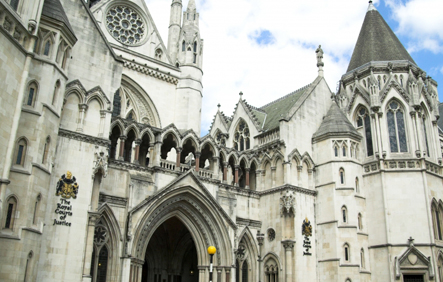Public bodies and applications in the family
courtThe case of
Re X (A Child) [2014] EWHC 2522 (Admin) prompts the question whether the
family court should not hear all issues with administrative law aspects or on
other interventions by public bodies.
The court hears such applications daily in
care proceedings (often called ‘public law’) where a public body is invariably
the applicant. Other public bodies are parties in a variety of family
proceedings: such as
Revenue and Customs v Charman [2012] EWHC 1448 (Fam),
[2012] 2 FLR 1119 (unsuccessful application by HMRC for a
husband’s family proceedings documents);
Re X and Y (Disclosure of Judgment to Police) [2014] EWHC 278 (Fam), [2014] 2 FLR (forthcoming) (child proceedings documents to be disclosed to the police); ‘originating
summons’ application for specimen of dead person’s DNA:
CM v The Executor of the Estate of EJ (deceased) and Her Majesty’s Coroner [2013] EWHC 1680 (Fam),
[2013] 2 FLR 1410).
These cases started as family proceedings under Family
Procedure Rules 2010 (FPR 2010), where remedies are provided either interim
to existing proceedings (FPR 2010 Part 18); or on a free-standing –
‘originating summons’ – basis under FPR 2010 Part 19. The father (F) in
Re X (above) proved not to have such an
easy run before Sir James Munby P.
Re X:
the case – LSCBs and Working Together
In
Re X a boy (aged 13 in 2014) had been stabbed by his mother. A care
order was made on 17 January 2012. The Local Safeguarding Children Board (LSCB) undertook
a serious case review (SCR), which was completed in 2011; and, as required, the
LSCB produced an overview report and executive summary. The
guidance to publication of these reports was said by the President to be in Ch 8 of Working Together to Safeguard Children (March
2010: now superseded by a March 2013 version). The 2010 version of
Working Together required only that the
executive summary of the report be published unless (as changed by a ‘ministerial letter dated 10 June 2010’) for ‘compelling reasons
relating to the welfare of any children directly concerned in the case’ the
LSCB thought this should not be permitted.
The LSCB decided (by letter dated 19
September 2012) that they would only allow the ‘overview report’ and ‘executive
summary’ to be seen by the court; and F was only allowed to see the report in
court or at the local authority’s offices. He applied to the court to have the
report released to him.
Sir James held that the LSCB was a public body
which is ‘juridically
distinct from and wholly independent of the local authority’. The application
was in respect of LSCB and not part of the care proceedings.Secondly, it was ‘a free-standing application’
not an application in the
inherent jurisdiction of the High Court (eg for a reporting restriction order
to
restrain publication of a document). The application should
therefore have been made in judicial review in the High Court by the procedure under CPR
1998 Part 54. The father’s application was therefore ‘misconceived’. However
the judge was willing to transfer the case to the
Of the ‘anxious scrutiny’ of European Convention 1950 proportionality required of the Board and by him on judicial review, Sir James said:
'[23] … Nor is there any arguable basis for saying that it wrongly struck the balance as between the various competing demands it had to evaluate: the right of the public to know; the quite separate right of the father to demand not merely access to but also to be supplied with a copy; and, most important of all, though not of itself determinative, the compelling demands of X's welfare.'
He did not give F the opportunity to go away and plead his permission application more fully in terms of any Convention rights. He rejected there being errors of law and attempted no ‘anxious scrutiny’ beyond the above.
Errors of lawThree barristers appeared before the President. F appeared in person. There is no evidence that Sir James’s attention was drawn to the following particular areas of law. Together with the brief scrutiny given to Convention issues these question of law might have justified the grant of permission to F to pursue his application. If so, subject to means, F might have been entitled to legal aid representation (Legal Aid, Sentencing and Punishment of Offenders Act 2012, s10).
(1) Disclosure in care proceedingsThe care order was made on 17 January 2012. The ‘executive summary’ was completed six months earlier. Insofar as it was available to the local authority it must have been subject to disclosure (ie though not necessarily to production) in the care proceedings. Yet its production in the care proceedings (when F had legal representation?) was not sought, it seems. Either the local authority could have applied for, or the judge ordered, public interest immunity or its confidential status should have been claimed. If only limited production was to be available then principles such as those applicable on partial disclosure in
Re M (A Minor)(Disclosure of Material) [1990] 2 FLR 36, HL should have been considered by the care court.
(2) ‘Local authority’The judge found that the LSCB and the local authority are separate bodies for party status and judicial review purposes. However, as a matter of fact it is ‘the local authority’ which is responsible for setting up LSCBs (CA 2004, s 13(1): ‘Each local authority… must establish a [LSCB] for their area’); and it is the same body which is the applicant in care proceedings (CA 1989, s 32(1)). The child in the care proceedings was also the subject of the report.
(3) ‘Functions’ of the LSCBSir James Munby P that the functions of LSCBs are limited to what is provided for in ‘statutory guidance’ under CA 2004, s 16(2) (
Re X para [3]). Of that ‘statutory guidance’ he referred to
Working Together to Safeguard Children (March 2010). His attention does not seem to have been drawn to the fact that by the time F made his application (May 2014) a March 2013 version of
Working Together applied. This specifically refers to publicity for reports, albeit in an oblique way (Chapter 4):
'[15] From 2013 there will be a national panel of independent experts to advise LSCBs about the initiation and publication of SCRs. The role of the panel will be to support LSCBs in ensuring that appropriate action is taken to learn from serious incidents in all cases where the statutory SCR criteria are met and to ensure that those lessons are shared through publication of final SCR reports …'
The President treats
Working Together as being guidance under s 16(2). The above para [15] is not conclusive on publication, but its meaning and effect on F’s case should perhaps have been considered by the High Court?
Legal implications of a decision in the family court This case, it is submitted, could have been treated as an application under FPR 2010 Part 19 or as an application interim to the care proceedings (FPR 2010 Part 18); but in any event the full legal implications of the modern law could perhaps have been permitted to F – Convention rights, the relevance of disclosure and the 2013
Working Together. All this is not to say that the President should necessarily have allowed a review of the LSCB decision-making. It does suggest that there may have been more errors of law – a definition of ‘local authority’, and the functions of, and guidance to, LSCBs – antecedent to the LSCB decision which he was being asked judicially to review.












 18 APR 2024
18 APR 2024

 18 APR 2024
18 APR 2024

 18 APR 2024
18 APR 2024

 18 APR 2024
18 APR 2024

 18 APR 2024
18 APR 2024










Leave a commentOrder by
Newest on top Oldest on top